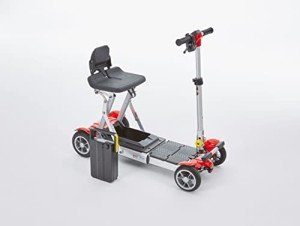Understanding Mobility Aids: Enhancing Independence and Quality of Life
As society continues to age and individuals progressively seek methods to preserve independence, the need for mobility aids has actually never ever been more pertinent. Mobility aids, which incorporate a variety of devices designed to assist individuals with strolling or moving, play a vital function in promoting mobility, improving security, and enhancing overall quality of life. This post will explore the numerous kinds of mobility aids, their benefits, considerations for selection, and answer some regularly asked questions.
Kinds Of Mobility Aids
Numerous mobility aids are available, each created to attend to specific needs. The following table sums up some of the most common kinds of mobility aids and their features.
| Kind Of Mobility Aid | Description | Best Suited For | Key Features |
|---|---|---|---|
| Walking canes | A handheld stick offering support and balance. | Individuals who need minimal support. | Light-weight, portable, adjustable height. |
| Walkers | Four-legged frames providing stability. | Those needing considerable support while walking. | Foldable, some with wheels, added security features. |
| Rollators | Wheeled walkers with a seat for resting. | Individuals requiring mobility with the option to rest. | Brakes, baskets for personal products, adjustable height. |
| Wheelchairs | Chairs with wheels for individuals with minimal mobility. | Those unable to stroll or needing substantial support. | Manual or powered alternatives, adjustable seating. |
| Scooters | Motorized devices for bigger ranges. | People with limited stamina but needing self-reliance. | Different sizes and styles, frequently easily transportable. |
| Crutches | Support devices put under the arms or forearms. | Individuals recovering from lower limb injuries. | Adjustable, lightweight, needs upper body strength. |
| Stairlifts | Mechanical devices for moving between floors. | Users facing difficulties in multi-level homes. | Adjustable for various staircases, automated. |
Benefits of Mobility Aids
Mobility aids offer a variety of advantages that can significantly improve the lives of individuals dealing with mobility challenges. Some noteworthy advantages include:
- Increased Independence: Mobility aids empower individuals to move freely without counting on others for assistance, thus enhancing their self-confidence and self-confidence.
- Improved Safety: Using mobility aids can lower the threat of falls and injuries, particularly for older adults or those with balance concerns.
- Improved Quality of Life: By assisting in mobility, people can engage in social activities, participate in events, and enjoy life more completely, contributing to better emotional and psychological health.
- Rehabilitation Support: After surgery or injury, mobility aids offer necessary support and stability, helping in recovery and rehab processes.
- Accessibility: Many mobility aids are created to be used both inside and outdoors, ensuring that individuals can navigate various environments with ease.
Factors to Consider When Choosing Mobility Aids
Selecting the appropriate mobility aid requires careful factor to consider of numerous factors, consisting of:
| Factor | Factors to consider |
|---|---|
| User's Needs | Evaluate the level of mobility needed; consider whether the user needs temporary or long-term assistance. |
| Physical Limitations | Assess the user's strength, balance, and coordination to identify the very best type of aid. |
| Setting | Consider the main environments where the aid will be used, such as home, outdoors, or specific terrains. |
| Weight and Portability | Ensure that the picked gadget is workable regarding mobility and storage, especially for outdoor use. |
| Budget plan | Mobility aids been available in a variety of rates; think about insurance protection and available funding choices. |
| Adjustability | Choose aids that can be changed for height and comfort to accommodate growth or changing requirements. |
Frequently Asked Questions About Mobility Aids
1. How do I understand if I require a mobility aid?
Lots of aspects can indicate the requirement for a mobility aid, such as problem strolling or stabilizing, tiredness while standing, or a current surgical treatment impacting mobility. Consulting with folding mobility scooters with basket can offer assistance tailored to private needs.
2. What types of mobility aids are covered by insurance?
Protection varies between insurers, but most provide alternatives for resilient medical devices, which usually includes wheelchairs, walkers, and some kinds of walking canes. Contact your insurance supplier for particular coverage info.
3. Can mobility aids be used outdoors?
Yes, many modern-day mobility aids are created for outside usage. Rollators, scooters, and some walkers are equipped with functions for stability and ease of use on numerous surface.
4. How do I keep my mobility aid?
Regular maintenance includes looking for any wear and tear, guaranteeing that parts such as wheels, brakes, and frames are functioning correctly, and cleaning the devices as needed. Following the maker's standards is vital for safety.
5. Is there a threat of ending up being dependent on mobility aids?
While some users may end up being reliant on mobility aids, they are designed to promote independence and mobility. Gradually using a mobility aid can boost self-confidence and help retain physical strength and coordination.
Mobility aids are important tools that empower individuals to get rid of physical challenges, promoting independence and improving quality of life. By comprehending the various kinds of mobility aids offered, their benefits, and essential aspects for factor to consider, families and caretakers can make educated decisions that best fulfill the needs of their enjoyed ones. With the best assistance, those with mobility difficulties can lead fulfilling and active lives, totally free to explore the world around them.

